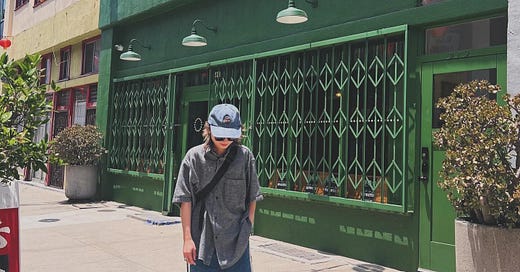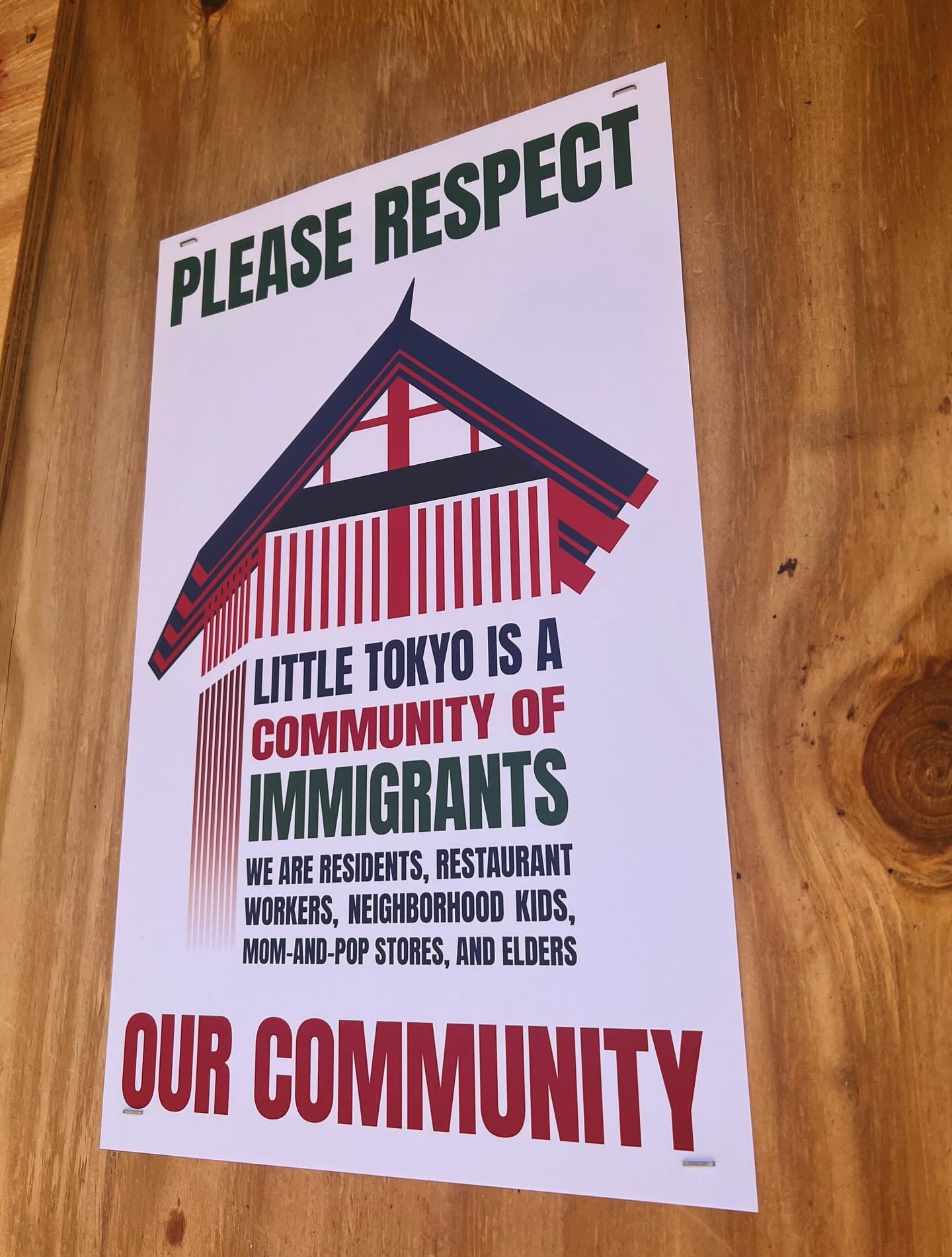I told you last week that I am producing my first short film. While some of this feels old hat as someone who has produced all sorts of other things, the nuances of filmmaking are new to me. I’m learning as I go. Flying by the seat of my pants. Going through what can only be described as trial by fire.
I feel like I am starting to truly understand what it means to make a movie, on a granular, ground level. It is fun and challenging and definitely harder than you think. As a producer, it can feel like holding together a million things at once while trying to keep everyone and everything moving forward. We’re in pre-production right now and I’m honestly just taking it day by day.
Overall, we’re in a good place and I’m thankful for friends who have been kind enough to answer all of my gazillion questions, and an awesome crew of people I’m excited to work with.
That said, it’s been hard to learn everything in such a short amount of time.
While googling, reddit threads, and the internet have been helpful for quick answers… books have been the most thorough guides, and their authors, my mentors.
Shooting to Kill, Christine Vachon’s infamous independent filmmaking diary from the 1990s has been my indie film school. She lays it all bare — the unglamorous, day-to-day grind of what it’s really like to be in the trenches as a truly indie producer.
I can’t stop thinking about a passage where she writes about often being “struck by the absurd discontinuity between a movie itself and the moviemaking process.”
That is, over the course of making the actual movie, things change, shit happens, and big decisions and adjustments have to be made. When you’re on set and there are actors and crew and cameras and lights and maybe even stunts and a smoke machine and extras and all the things… A LOT can happen… and you can kind of forget what brought you all together here in the first place. Vachon writes:
…sometimes in the middle of the confusion you realize that you’re so far from the original impulse that you forget what that original impulse was: why you wanted that scene, where it fit into your overall design, what your overall design even is.
Vachon says that’s why preparation through materials like shot lists and storyboarding is so important. To ensure you stick to that original impulse, or at least don’t forget the original mission and story of the movie, so that each department is able to think “deeply about the best way to tell this part of the story,” or, as she bluntly puts it:
…so that, on the thirty-fifth day of shooting, when you’re so exhausted that you can barely remember what the movie is about, you have something to look back at that you trust, something devised in tranquility, from a time when the initial inspiration burned brightly.
I like this a lot and totally get it as I produce my first film and in everything that I have done as a creative, executive, writer, and producer.
Doing creative work, leading teams, pushing a story, idea, or vision forward is hard.
As a woman of color, I have often faced skepticism, questioning, mansplaining, and all the -isms and -ings that could make you go crazy and doubt yourself.
Having that original plan or guide helps me stick to the plot and keep moving forward to finish the thing I set out to make.
This past week (and honestly the last several weeks and months of soft prep and pre-pro, if I’m being honest) has been full of moments where I felt my vision, decisions, and even leadership was questioned. Either by someone else or by own myself.
Remembering the original vision — whether through our writer/director Patrick Epino’s script and storyboard, or the many discussions we’ve had about the WHY and WHAT of this film — has helped me stay focused on the most important thing: making this movie.
Our film VETERANO tells the story of an immigrant failed by the system who takes justice into his own hands. It’s an underdog immigrant drama wrapped inside a fun and, dare I say, bad ass crime thriller with a Filipino veteran at the center.
To reconnect with the original vision and impulse behind the film, I pulled together some of the key references we used during our research in the development phase. While I had everything in a big spreadsheet, I wanted to share a more accessible version with the crew, who may be less familiar with the history and community roots of the story.
I created a two-page document: the first page features Patrick’s director’s statement, and the second includes a curated list of resources: books, a documentary, a photo exhibit, a video, a podcast (yup), and educational materials. It isn’t a mandate for everyone to check all of this out, it’s just there if they need it. A starting point to explore the deeper history and community connections that inspired the film. A reminder of that original impulse.
Support my work and pledge a paid subscription to SUBTITLES.
If you enjoyed reading this, subscribe for free or, better yet, consider pledging a paid subscription. I’ll be adding a paywall soon to help cover the time, energy, and creative labor that goes into this newsletter. For the cost of a beer, a matcha latte, or less than a glass of wine each month, you’re supporting independent storytelling and helping keep this space thoughtful and sustainable. Thanks for reading and for your support.
My recs for the week:
James by Percival Everett. I know I mentioned this last week but it’s too good. I’m near the end, devouring every chapter. It’s satire, dark comedy, horror, and fantasy — all wrapped into a reimagining of the Adventures of Huckleberry Finn, told from the perspective of his friend Jim, an escaped slave on a mission to save his family. I grew up in Manila and Huck was not part of our curriculum at least when I was there. I only know bits and pieces of the story. This book actually reminds me of the pressure I felt as a teenage immigrant in America, surrounded by classmates who had read, watched, and experienced things I hadn’t. I felt lost, embarrassed, and just stupid. Reading this makes me feel, for some reason, that I am not alone. And I am LOLing at every twist and turn.
Shooting to Kill by Christine Vachon. I wrote about it but I just have to recommend. It’s truly been a guide and Christine Vachon my mentor in making what I hope becomes a killer film. Talk to me after our shoot and we shall maybe see.
Pananagutan, a photo exhibit by Raffy Lerma at Ava Duvernay’s Array hosted by Pilipino Workers Center. I went to this over the weekend and still can’t stop thinking about it. I shared photos and wrote about it here. A short excerpt: I’ve been thinking a lot about the drug war and historical revisionism in the Philippines lately, so this event came at the right time. I’ll be thinking about these photos and stories for awhile.
Last one is not a rec, more of a thought. I also shared photos, a video, and wrote about it here. I’ll repost it below:
Our film VETERANO tells the story of an immigrant failed by the system who takes justice into his own hands. It’s an underdog immigrant drama wrapped inside a fun and, dare I say, bad ass crime thriller with a Filipino veteran at the center.
There are way more important things happening right now but as our writer/director @PatrickEpino said, it is not lost on us that our production, and the lives of immigrants and community members, are being disrupted by that same oppressive system.
We have been planning to shoot in community spaces downtown and recently visited our locations to assess the situation. As immigrants and children of immigrants, we are in support of the community and the people. We also plan to keep moving forward in making this film that we believe speaks powerfully to this moment. More to come.
Stay safe out there.






You got this, Paola! May we FilAm storytellers lift each other up!
🙌🏻